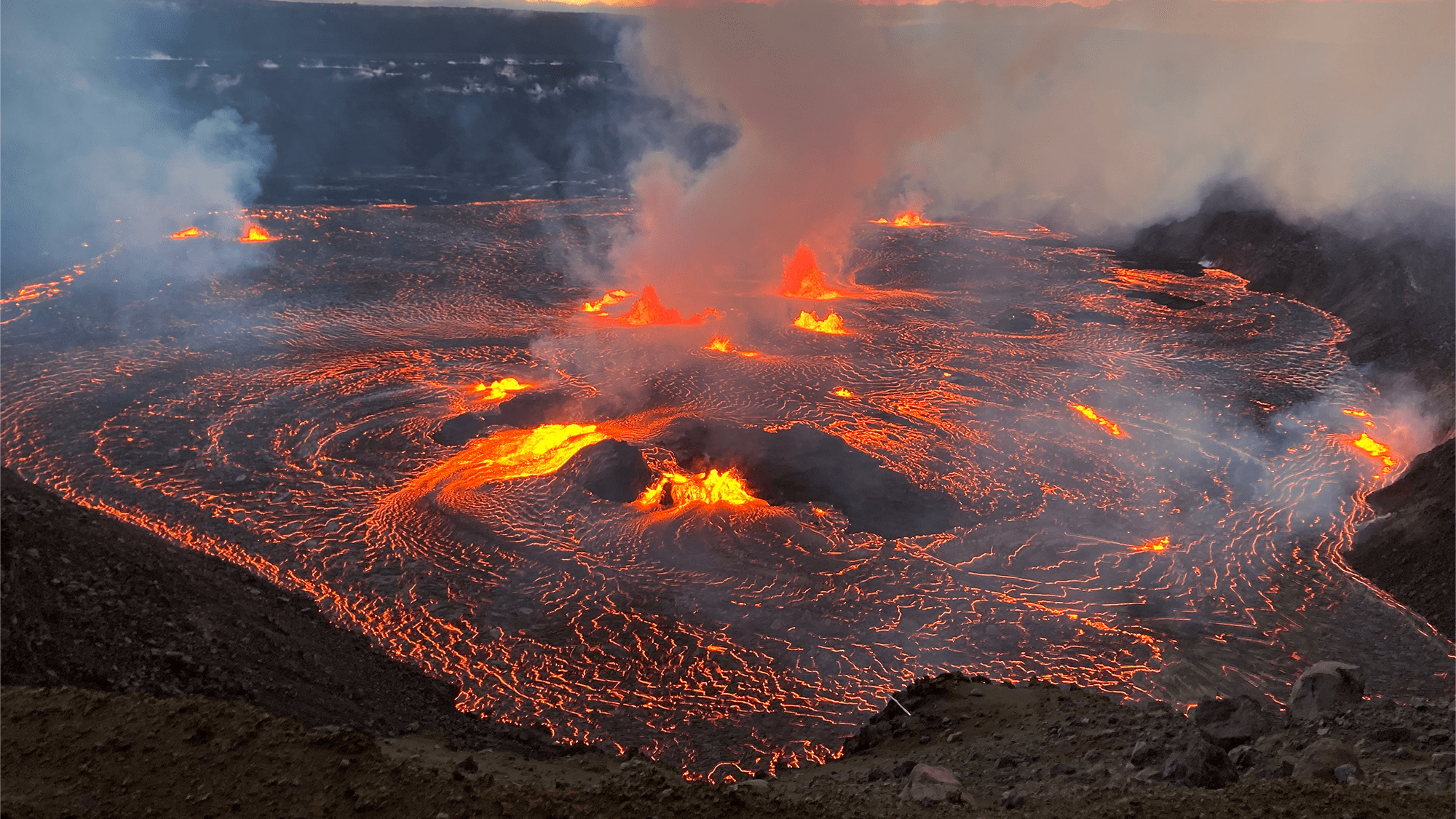

After a three-month pause, Mount Kīlauea on Hawaii’s Big Island began erupting on Wednesday June 7 at 4:44 AM local time. An increase in earthquake activity and changes in the patterns of ground deformation at the summit started Tuesday night. These changes indicate the movement of magma in the subsurface.
According to the United States Geological Survey (USGS), all of the volcanic activity is confined to Kīlauea’s summit region, within Hawai‘i Volcanoes National Park.
[Related: Geologists: We’re not ready for volcanoes.]
The eruption sent lava fountains at the summit as high as 200 feet. By roughly 4:00 PM, 32 new feet of lava had been added to the crater floor, according to the USGS’ Hawaiian Volcano Observatory.
Webcam images from Kīlauea’s summit early Wednesday morning indicated the eruption was occurring within the Halemaumau crater in the summit. There are currently no indications that activity will migrate out of the summit region, but the volcano alert level and aviation color code will remain at a code red as some of the hazards associated with the onset of the eruption are evaluated.
“Large amounts of volcanic gas—primarily water vapor (H2O), carbon dioxide (CO2), and sulfur dioxide (SO2)—are continuously released during eruptions of Kīlauea volcano,” the USGS wrote in a statement. “As SO2 is released from the summit, it will react in the atmosphere to create the visible haze known as vog (volcanic smog) that has been observed downwind of Kīlauea. ”
Some other hazards include glass fibers formed from gas bubbles that stretch into long thin airborne strands called “Pele’s hair,” as well as other dust fragments and particles that can fall downwind of the fissure vents. The USGS advises residents to minimize exposure to volcanic particles, which can cause skin and eye irritation.
“We’re not seeing any signs of activity out on the rift zones right now,” USGS geologist Mike Zoeller told the Associated Press. Rift zones are areas of weakness in the volcano. They form early in the volcano’s lifetime, most likely due to spreading as the volcano settles. When pressure builds within the summit magma plumbing system, intrusions can occur within the rift zone and they’re usually accompanied by an increasing number of earthquakes, according to the USGS.
“There’s no reason to expect this to transition into a rift eruption that would threaten any communities here on the island with lava flows or anything like that,” said Zoeller.
There are no current signs that this will develop into a situation like the 2018 Kīlauea eruption that destroyed over 700 homes. This eruption was an intrusion into the lower East Rift Zone (LERZ)
[Related: This is what it takes for scientists to get you those amazing pictures of the Kilauea eruption.]
Kīlauea is Hawaii’s second largest volcano and it erupted from September 2021 to December 2022. For roughly two weeks in November and December 2022, Hawaii’s biggest volcano (Mauna Loa) was also erupting on the Big Island.
Kīlauea took a short pause and began erupting again in January and continued erupting for 61 days, ending in March.
“This eruption is following a very similar playbook to the last three that we’ve seen here since 2020,” said Zoeller.
Watch a livestream of the eruption here:

